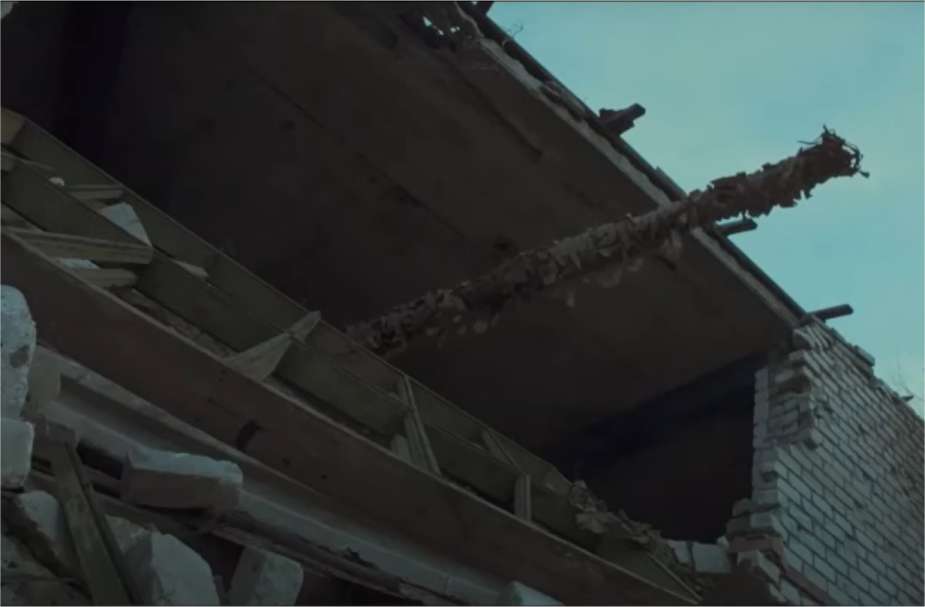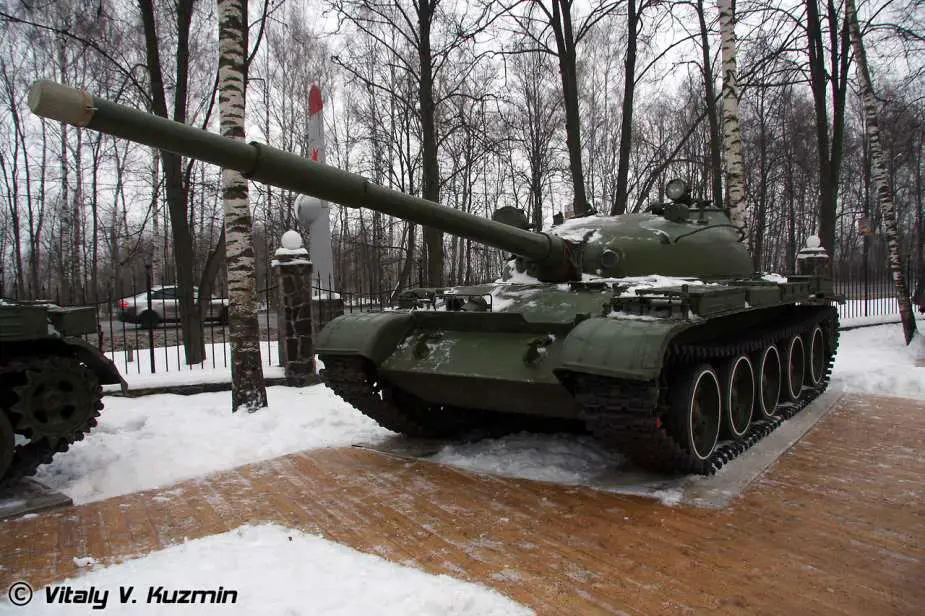Russian forces have been using old T-62 tanks as self-propelled artillery units on the front lines. This adaptation was highlighted in a video released by Russian media, showcasing the tanks' new role in the ongoing conflict with Ukraine.
Follow Army Recognition on Google News at this link

A T-62 main battle tank is used by the Russian Army as a self-propelled howitzer. (Picture source: Russian Media)
A notable failure in the Ukraine war has been the underutilization of main battle tanks, largely due to the emergence of UAVs which have completely reshaped the conflict and likely future conflicts. This has necessitated finding alternative uses for a large number of tanks that have been rendered ineffective by small, cost-effective, but highly efficient drones. The decision of the Russian forces to use T-62 tanks as improvised artillery units in the current conflict is a combination of practicality and necessity.
Equipped with a firing range of about one thousand meters under normal conditions, these tanks can reach a range of up to six kilometers when firing in a high arc from concealed positions. This capability was anticipated by the original designers, who included lateral levels and azimuth indicators in the tank's equipment to assist in artillery-style targeting. However, the accuracy of these improvised artillery units remains suboptimal. To mitigate this, Russian forces use a reconnaissance drone team, equipped with a DJI Mavic 3 drone, to correct the tank's fire. The drone operator identifies misses and communicates adjustments to the tank crew.
The video reveals that the refurbished Russian T-62 lacks adequate communication equipment. The tank's gunner must coordinate with the drone operator using a civilian walkie-talkie and a smartphone messaging app. Other operational challenges are evident. The tank's standard shell ejection mechanism in the rear of the turret is non-functional, leading to spent shells accumulating on the floor, causing smoke and deteriorating conditions inside the tank.
The Russian T-62 tank, judging from the surroundings in the video, appears to be firing from a partially destroyed residential building in an urban area. This tactic likely aims to provide minimal camouflage and reduce the threat of Ukrainian FPV strike drones.
One of the main reasons for choosing the T-62 for this role is its relative simplicity and low maintenance requirements compared to newer tank models like the T-72 and T-90. This simplicity makes the T-62 easier to operate and quicker to train personnel on, an important factor given the high demand for military equipment in the ongoing conflict. Moreover, the operational costs of the T-62 are lower, which is a significant advantage in prolonged engagements.
Despite being an older model, the T-62 has undergone improvements to remain effective in combat. These improvements include reinforced armor, enhanced fire control systems, and the addition of advanced sighting capabilities, such as thermal vision. These modernizations have enabled the T-62 to effectively engage targets at longer ranges, a crucial aspect of artillery. For example, the addition of thermal sights extends the tank's combat effectiveness, allowing for better target acquisition in various conditions.
Furthermore, the availability of large numbers of these tanks in reserve makes them suitable for adaptation as self-propelled artillery. Given the significant losses of more modern tanks like the T-72, T-80, and T-90, the Russian military has found it practical to bring these older tanks back into service, especially when they are not directly confronted with the most modern Western tanks.
However, even with these improvements, the T-62 is far from being without limitations. It lacks some of the more advanced protections found in newer models, such as Explosive Reactive Armor (ERA), making it more vulnerable to anti-tank weapons. Moreover, the sighting systems, although improved, are still significantly inferior compared to the more modern equipment used by Ukrainian forces.
The use of T-62 tanks in this new role reflects a pragmatic approach by the Russian military to adapt and effectively use available resources in the context of the ongoing conflict, balancing the need for firepower with the limitations of older equipment. This choice is more out of necessity than a technical preference, as its range remains significantly inferior to its opponents.
 Russian T-62 main battle tank (Picture source: Vitaly V.Kuzmin)
Russian T-62 main battle tank (Picture source: Vitaly V.Kuzmin)















